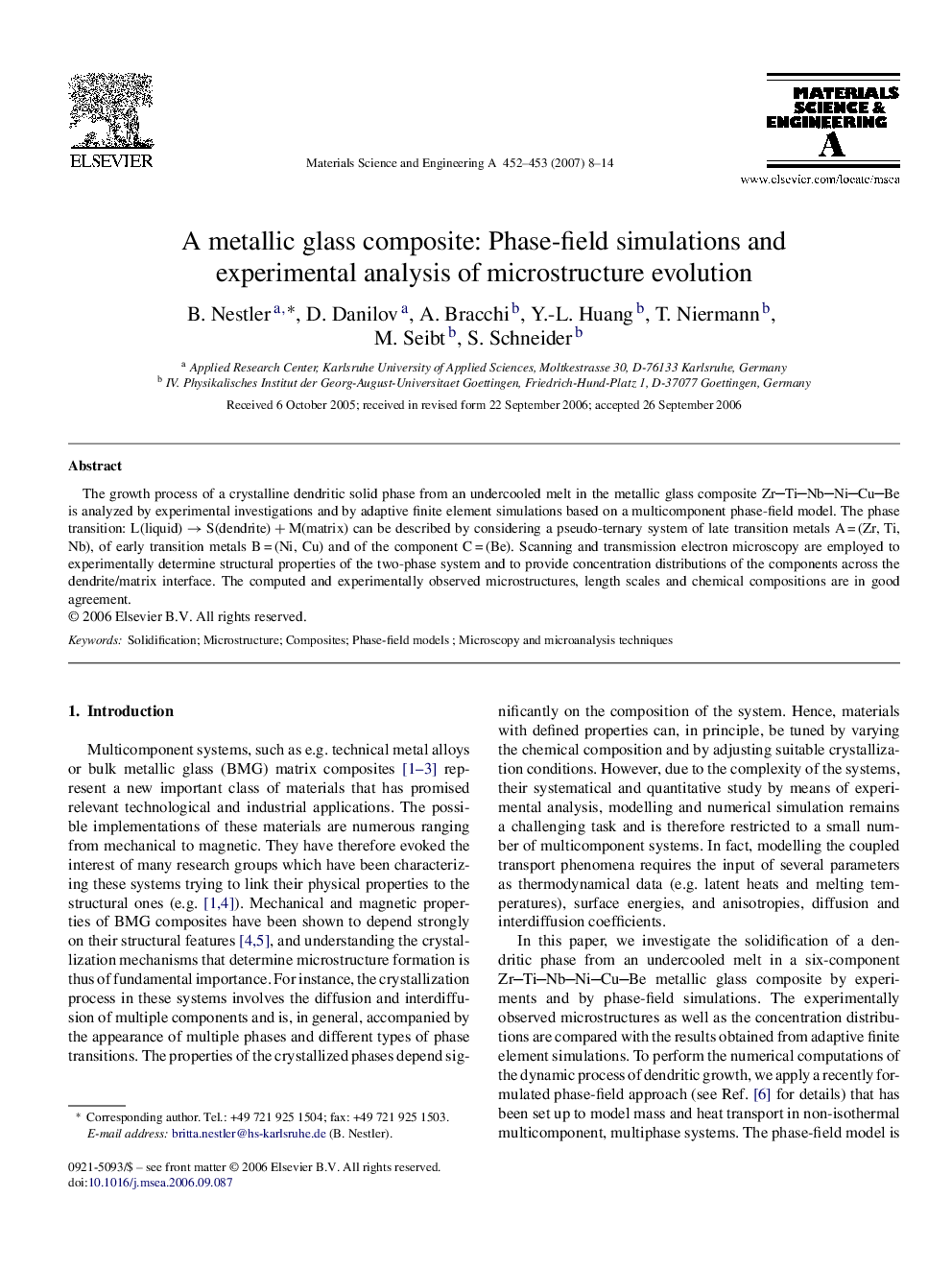| کد مقاله | کد نشریه | سال انتشار | مقاله انگلیسی | نسخه تمام متن |
|---|---|---|---|---|
| 1584064 | 1514899 | 2007 | 7 صفحه PDF | دانلود رایگان |

The growth process of a crystalline dendritic solid phase from an undercooled melt in the metallic glass composite Zr Ti Nb Ni Cu Be is analyzed by experimental investigations and by adaptive finite element simulations based on a multicomponent phase-field model. The phase transition: L(liquid)→S(dendrite)+M(matrix)L(liquid)→S(dendrite)+M(matrix) can be described by considering a pseudo-ternary system of late transition metals A = (Zr, Ti, Nb), of early transition metals B = (Ni, Cu) and of the component C = (Be). Scanning and transmission electron microscopy are employed to experimentally determine structural properties of the two-phase system and to provide concentration distributions of the components across the dendrite/matrix interface. The computed and experimentally observed microstructures, length scales and chemical compositions are in good agreement.
Journal: Materials Science and Engineering: A - Volumes 452–453, 15 April 2007, Pages 8–14